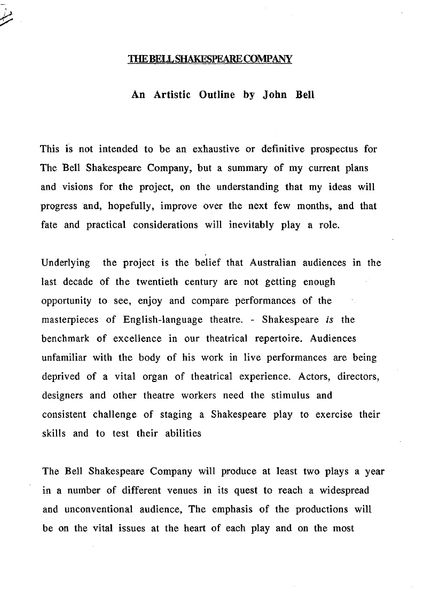
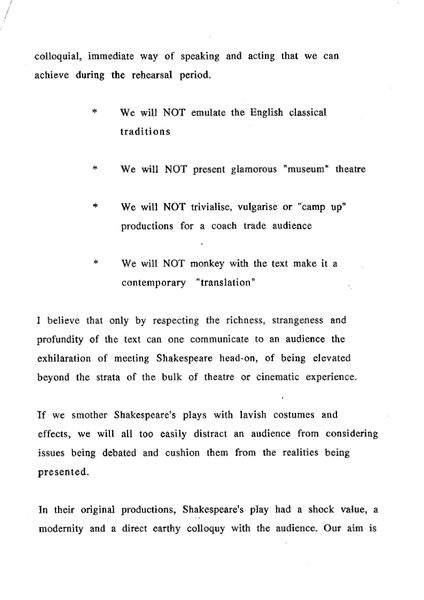

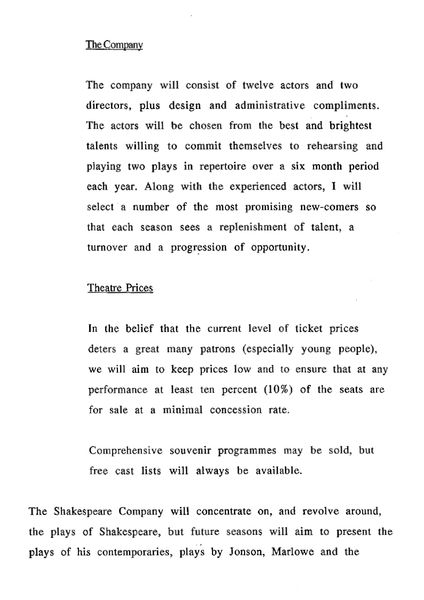
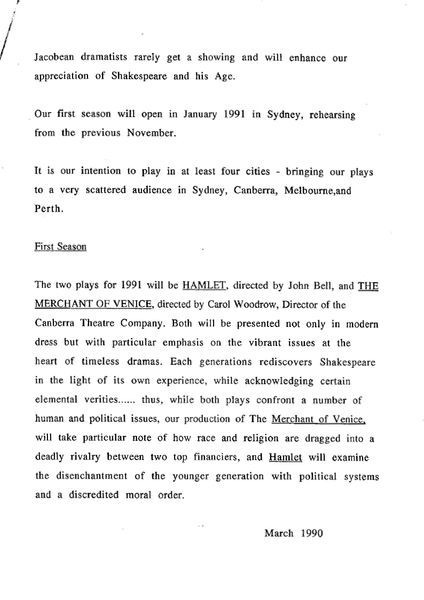

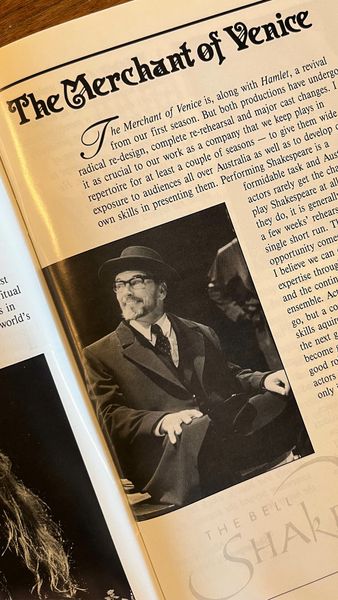

In 1990, John Bell published The Bell Shakespeare Company: An Artistic Outline for potential supporters and donors that would help lead Bell Shakespeare from an idea to a working theatre company. 32 years and 115 mainstage productions later, we reflect on all that Bell Shakespeare has become, and how John’s values and vision still shine through in today’s productions.








In line with John’s vision, the Company did stage productions of Hamlet and The Merchant of Venice in 1991 (directed, as promised, by John Bell and Carol Woodrow respectively), which toured in Sydney, Canberra, Melbourne and Brisbane. The following year, both productions were re-mounted, and Richard III joined the fold.
John’s vision undeniably rings true to the Company’s Vision and Mission in 2023. To this day, Bell Shakespeare strives to use Shakespeare and classical works as a means by which we tell universal stories, acknowledge and reflect on our past, explore our present, and contemplate our future. John insisted that “The emphasis of the productions will be on the vital issues at the heart of each play”. That Shakespeare’s plays "should not be presented as museum pieces, but rather as explorations of the human condition", remains core to the way we present each season of theatre.
As for John’s vision for a moveable theatre – a Globe-like venue that could be taken across the country – well, we’re not there (yet). That said, through our education programs such as The Players, and our national tour, we continue to bring Shakespeare to schools, community halls and theatres in every state and territory, year after year. In 2022 alone, over 128,000 Australians engaged in a performance or learning program with Bell Shakespeare, and 40% of our education programs were delivered in regional Australia (more on this here).
And now, as we prepare to mount our first full season of a mainstage production in our own venue, The Neilson Nutshell, there are some remarkable parallels with John’s peripatetic venue. John described
“a flexible space with various sections of its tiered seating being detachable for each production so that the space and actor/audience relationship is always changing, always unpredictable… The space itself is the ‘set’. There will be no scenery, just the actors working in various spaces amongst the audience, close to them, intimate and unpredictable as to exits and entrances.”
For those that have visited The Neilson Nutshell, perhaps you can begin to see similarities. The Neilson Nutshell is a black box venue with moveable seating banks that can be configured and reconfigured in different ways for each production. Performances may be in the round, in thrust, in traverse or (to John’s lament) proscenium. The audience sits close to the actors to connect with the performance and to their fellow audience members. The space does not accommodate lavish sets – the focus is on the words and the human experiences within Shakespeare’s stories.
As for the space being “secure, reasonably proof against noise, weather and daylight” – so far, so good.
We would like to sincerely thank the Seaborn, Broughton & Walford Foundation for their work in preserving documents such as this that allow us insights into the cultural history of theatre in Australia. You can find out more about the SBW Foundation’s work here.